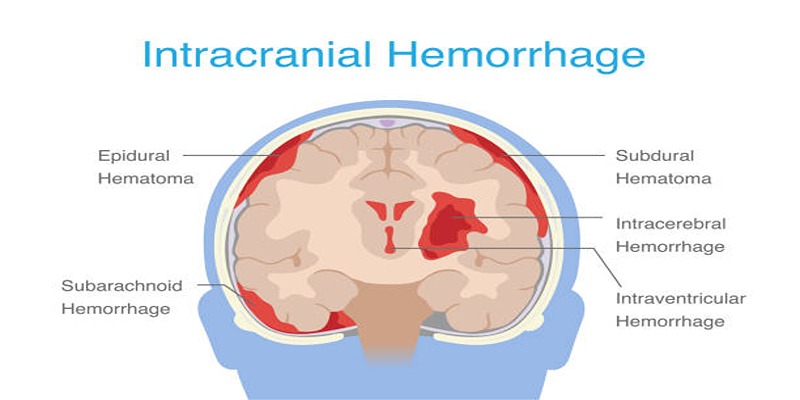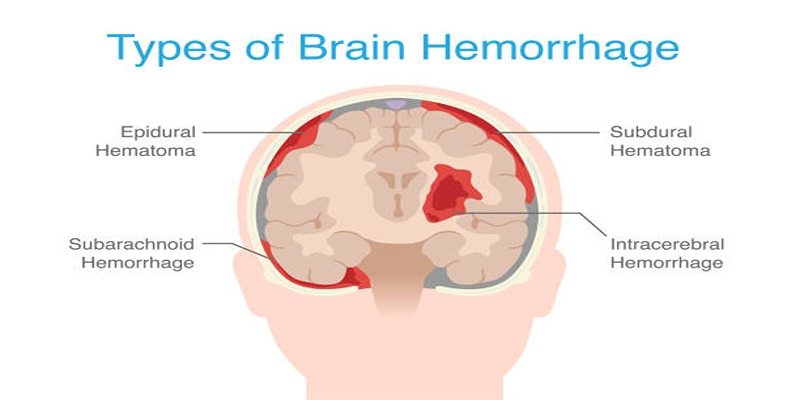Understanding the Causes of a Subarachnoid Hemorrhage
A subarachnoid hemorrhage (SAH) stands as a dangerous medical emergency because it stems from blood flow into the area around the brain and the protective membranes that surround it. A subarachnoid hemorrhage usually develops abruptly yet originates from multiple sources between them being trauma or aneurysm rupture. This guide describes the main factors that cause subarachnoid hemorrhages together with risk elements which advance their occurrence and demonstrates how to treat and stop this fatal medical condition.
Causes of Subarachnoid Hemorrhage

The causes of subarachnoid hemorrhage can generally be categorized into traumatic and non-traumatic origins, each with distinct underlying factors.
Traumatic Causes
Trauma is a leading cause of subarachnoid hemorrhage, typically resulting from head injuries sustained during accidents, falls, or sports activities. When a head injury occurs, it can damage blood vessels within the brain, leading to bleeding in the subarachnoid space. This type of SAH is often accompanied by other forms of brain injury, making it crucial to diagnose and treat promptly to prevent serious complications.
Non-Traumatic Causes
The rupture of an intracranial aneurysm stands as the major reason behind non-traumatic subarachnoid hemorrhages. When raised pressure activates these weak regions they will break open and discharge blood into the subarachnoid space. Certain non-traumatic subarachnoid hemorrhages result from weak blood vessels called intracranial aneurysms while separate causes consist of vascular malformations and blood clotting disorders and infections which weaken vessel walls. Medical attention must be provided right away since these cases lead to fatal outcomes unless patients receive prompt medical care.
Risk Factors for Subarachnoid Hemorrhage
Certain factors significantly increase the likelihood of experiencing a subarachnoid hemorrhage. Recognizing these risk factors is critical for prevention and early intervention.
Hypertension
Subarachnoid hemorrhage occurs mainly because of high blood pressure levels. Repetitive high blood pressure forces blood vessel walls to lose their strength through extended periods. Elevated pressure serves as a risk factor which makes vessels more prone to develop aneurysms and ruptures. Health modifications that include sodium reduction and stress control with regular exercise operation work to decrease blood pressure levels. The administration of medications serves to control hypertension and helps lower the chance of vascular complications leading to subarachnoid hemorrhage.
Smoking
Smoking has a direct link to a heightened risk of subarachnoid hemorrhage due to its impact on blood vessels. Additionally, smoking reduces oxygen-carrying capacity and increases overall vascular stress. Quitting smoking is one of the most effective steps to significantly lowering the chance of not just subarachnoid hemorrhage, but also other cardiovascular diseases. Support programs, nicotine replacements, and counseling can assist individuals in overcoming nicotine dependency.
Family History
A family history of aneurysms or hemorrhagic strokes may increase susceptibility to subarachnoid hemorrhage. Genetic factors can play a role in the weakening of blood vessel structures or predisposition to hypertension. Individuals with a known family history are encouraged to undergo regular medical check-ups, including imaging scans when necessary. Early detection of potential vascular issues can significantly mitigate the risk through preventive measures and monitoring by healthcare professionals.
Symptoms and Early Warning Signs
Recognizing the symptoms of a subarachnoid hemorrhage early can be lifesaving. Prompt medical attention is crucial to improve outcomes.
Sudden Severe Headache
A sudden and intense headache, often described as the worst headache of one’s life, is one of the hallmark symptoms of a subarachnoid hemorrhage. This pain typically occurs without warning and may be accompanied by nausea or vomiting. The headache is caused by the rapid release of blood into the subarachnoid space, which leads to increased intracranial pressure. Anyone experiencing such symptoms should seek emergency medical care immediately to prevent further complications.
Stiff Neck and Sensitivity to Light
People who experience subarachnoid hemorrhage frequently develop a rigid neck which accompanies light sensitivity as a second symptom. The meningeal tissue receives irritation leading to these symptoms as a result. The blood present in the cerebrospinal fluid causes the irritation of meninges which leads to neck stiffness. Head movements become restricted in patients which adds to their general discomfort. The symptoms tend to resemble those of other health conditions so patients must seek medical examination for proper identification.
Vision and Neurological Problems
Subarachnoid hemorrhages can disrupt normal neurological function, leading to blurred or double vision, confusion, or seizures. Pressure on the brain caused by the bleeding may affect specific nerve pathways, resulting in these symptoms. Additionally, some patients may report difficulty walking, weakness on one side of the body, or slurred speech. These warning signs reflect potentially severe underlying damage, making rapid diagnosis and treatment vital. Recognizing these neurological changes promptly increases the chances of minimizing long-term effects and preserving quality of life.
Diagnostic Methods and Procedures

Subarachnoid hemorrhages require precise diagnostic approaches to ensure rapid and effective treatment. Advanced imaging and clinical evaluations play a crucial role in identifying this condition.
Physical Examination and Medical History
The diagnostic process begins with a detailed physical examination and a review of the patient’s medical history. Physicians assess for telltale symptoms such as neck stiffness, neurological deficits, or altered mental status. Gathering information on past medical conditions, family history, and recent activities helps narrow down possible causes, providing essential context for further testing and diagnosis.
Imaging Techniques
Imaging is critical in diagnosing a subarachnoid hemorrhage. A computed tomography (CT) scan is typically the first-choice test as it can rapidly detect bleeding in the brain. For cases where a CT scan appears inconclusive, a lumbar puncture or magnetic resonance imaging (MRI) may be conducted to confirm the presence of blood or other abnormalities, enabling doctors to proceed with an appropriate treatment plan.
Cerebral Angiography
Cerebral angiography is used to identify the specific site of bleeding or detect aneurysms that may have caused the hemorrhage. This procedure involves injecting a contrast dye into the blood vessels to provide detailed imaging of brain vasculature. It is particularly useful in planning surgical or endovascular interventions, offering critical insights into the cause and extent of the hemorrhage.
Conclusion
Early detection and timely intervention are crucial in managing subarachnoid hemorrhage to prevent severe complications or fatalities. Patients presenting with sudden, severe headaches or other alarming symptoms should seek immediate medical attention. Advanced diagnostic tools, coupled with a well-structured treatment plan, significantly improve outcomes. Comprehensive care often involves a multidisciplinary approach, including neurologists, radiologists, and critical care specialists. By addressing the underlying cause and closely monitoring recovery, healthcare professionals can help patients achieve better prognoses and reduce the risk of recurrence.












